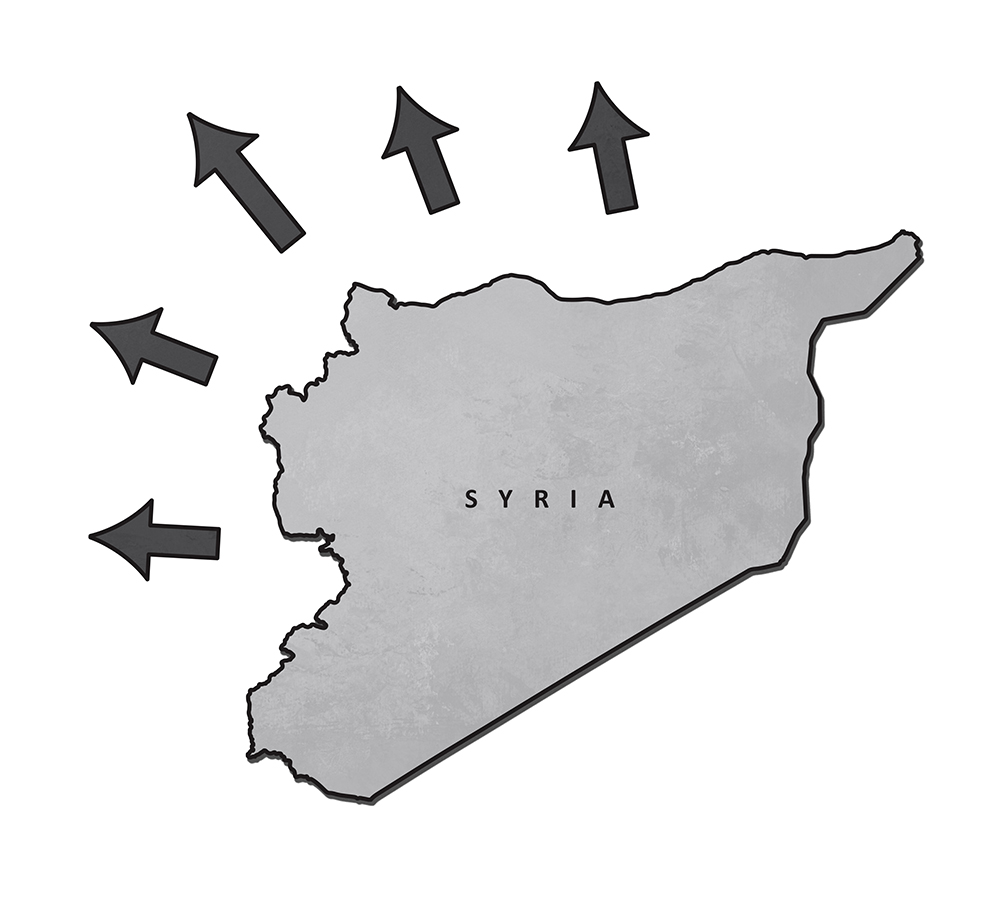It is widely accepted that the magnitude of an event is determined by its persistent media coverage and its subsequent absorption into the national dialogue. The ongoing Syrian refugee crisis has certainly captured this magnitude when it became the worst refugee crisis since WWII.
Escaping Violence
Approximately 219,000 people tried to cross the Mediterranean in search of asylum in Europe in 2014, and 300,000 refugees have tried already in 2015. Still, hundreds of thousands more are currently escaping the violence and destruction brought by war and terrorism.
For a refugee, the passage to Europe is determined by whether or not he or she can cross a border. This leads us to question the idea of borders, and ponder whether or not they perpetuate violence by creating artificial divisions in society.
Many Nations In Crisis
Refugees from Syria are escaping the bloody civil war initiated by the Arab Spring in 2011. The war between the Assad regime and the assortment of armed groups are being waged in the urban neighborhoods and streets of some of Syria’s most populous cities. Bashar al-Assad has been criticized by the international community for using indiscriminate force on civilians, such as the use of barrel bombs.
Syria is not the only country wracked by war and destruction. Egypt is now run by military dictator, Abdel Fattah el-Sisi, who declared himself President via military coup. Palestinians too, are escaping the violence and destruction brought upon the Israeli Defense Forces, whose latest military campaign, Operation Protective Edge, resulted in the death of over 2,200 primarily civilian Palestinians, the destruction of 10,000 homes and the displacement of more than 300,000 Palestinians. ISIS, Boko Haram, and the fighting between the Kurdistan Worker’s Party and the Turkish government has also furthered the displacement of hundreds of thousands of refugees.
Legal Complexity
Before refugees enter Europe, they must cross borders. However, the legal issues surrounding borders are intricate, which can force refugees to become vulnerable to various legal repercussions or leave them in a legal limbo. This physical and legal complexity of crossing a border raises questions regarding the nature of these borders.
Noam Chomsky, renowned critic of U.S. foreign policy, argues borders are imposed and maintained by violence and are arbitrarily created. He uses the example of the Lebanon-Israel border, which was established by the Sykes-Picot Agreement with little concern for those living there or for the terrain. Chomsky describes the border as instrumental in maintaining “the architecture of violence.”
Borders as Social Constructs
A country’s border as an idea has always been challenged, but its relevance is accentuated today as borders are perceived by refugees as an obstacle to their passage to freedom. The border is a social construct, but people of all nations must question whether this artificial idea is either a fundamental necessity in providing structure to the world, or whether it is being used as an instrument to impose violence on the weak by the strong.
Our notions of borders and the politicians we elect to decide the legality of refugees should be decided democratically by citizens. Eliminating racist and xenophobic notions of refugees begins with educating the public about the conflicts that force men, women and children to leave their homes and seek a better life







